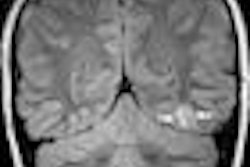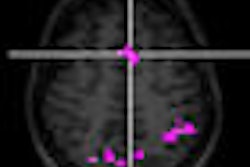The American College of Radiology's (ACR) Committee on Drugs and Contrast Media is formulating a policy through its Manual on Contrast Media on the appropriate use of contrast agents, including gadolinium-based agents.
Gadolinium-based imaging agents are of particular interest and concern because of their link to nephrogenic systemic fibrosis (NSF) in certain high-risk patients.
"The gadolinium issue is obviously a very controversial and significant issue," said Dr. Arthur Segal, previous chairman and current member of the committee and clinical professor of radiology and urology at the University of Rochester Medical Center in Rochester, NY. "What we try to do is sort as much as possible fact from other issues and say, 'Is this a reasonable recommendation based upon our understanding of the issues at this time?' "
Version 6 of the manual was published online in May. Segal said that by posting the manual online, committee members and other interested parties have the most up-to-date version of the document.
In September, the committee made a few proposed revisions to certain sections. For example, in a section that refers to patients with chronic kidney disease (CKD) 4 or 5, the committee is considering deletion of a line that reads: "Currently, it is suggested that until or unless there is additional evidence to the contrary, the use of gadolinium is to be avoided in high-risk patients. Macrocyclic media may be safest."
Active discussions
Segal, who also serves as emeritus chairman of radiology at Rochester General Hospital, stressed that there are "active discussions about further modifying" the manual and stressed that "nothing is set in stone. It was the wisdom at that time, but there have been additional testimony and comments and research of the literature. We are constantly looking to revise as necessary."
The ACR committee plans to meet in December at the annual meeting of the Radiological Society of North America (RSNA) in Chicago to further discuss the manual's contents. "I suspect that by RSNA we will have something on the Internet that will be the latest and best of what we can provide," Segal said. "We are trying to come up with a reasonable recommendation for the practicing radiologist. On one hand, we are trying to keep the public as safe as possible, but not jump to conclusions that are not supported by whatever data is there."
One company with a vested interest in the committee's final policy manual is GE Healthcare. The Chalfont St. Giles, U.K.-based company has drawn fire, along with other gadolinium-based contrast agent manufacturers, for adverse effects such as NSF after the administration of gadolinium. The company also has commended the ACR and its committee for taking the initiative in this area.
ACR support
"From GE Healthcare's perspective, we want to support the ACR and the [U.S. Food and Drug Administration (FDA)] black box warning to avoid all gadolinium-based contrast agents in this high-risk population," said Dr. Eric Cantor, head of medical and professional services for the Americas for GE Healthcare's Medical Diagnostics unit.
GE manufactures the gadolinium-based contrast agent Omniscan and does not support its use in the high-risk patient group. "We want to get across that there is no agent that can be used with impunity in this category of high risk," Cantor added. "If one tries to differentiate between products -- which would be in contradiction to the ACR manual or the FDA black box warning -- I believe they are making a mistake."
At-risk patients are those with chronic kidney failure of stage 4 or 5 with a glomerular filtration rate (GFR) of less than 30. GE's data show that patients with a GFR of 15 or less and who are on hemodialysis substantially have the greatest risk of adverse reaction to a gadolinium-based contrast agent. GE supports recommendations for patient screening to minimize risk in patients with severe, chronic, or acute kidney injury.
GFR factor
"Generally, when a patient has chronic kidney failure and the GFR is 15 or less, you are thinking of putting them on chronic dialysis, kidney replacement, or therapeutic treatment of one kind or another," Cantor noted. "The majority of patents we have seen that have developed NSF, by far and away, are those with GFRs of less than 15, but the general recommendations, which we support, are those with chronic kidney disease of level 4 or 5, GFR of less than 30, or those with acute kidney injury of any cause."
GE has not had any new cases of NSF reported to the company or seen any cases come before regulatory authorities for Omniscan since July 2007. "That is not to say the issue has gone away," Cantor added. "It remains a risk for patients in this [high-risk] category."
Cantor said that one factor contributing to the decline in adverse incidents from gadolinium-based contrast agents is "the rapid action taken by radiologists across the globe to screen patients and to minimize risk by identifying patients and decrease the risk of all gadolinium-based agents in this high-risk population."
Procedures down
Still, the number of procedures that use gadolinium-based contrast agents has declined because of the fear of NSF. Cantor opined that some doctors "are becoming scared" to use gadolinium-based contrast agents even in patients who are at minimal or no risk based on current data. "Therefore, there is the risk of diagnoses going unmade or missed, and that is of concern," he added.
In its place, some doctors use iodinated contrast agents in patients who may be at-risk of developing NSF. "That has to be done carefully as well, because there remains the risk of developing acute kidney injury, taking a patient potentially from a moderate or severe degree of renal deficiency into a category of being put onto dialysis. There is no easy solution."
By Wayne Forrest
AuntMinnie.com staff writer
October 24, 2008
Related Reading
Hemodialysis helps prevent NSF in some patients, study finds, August 19, 2008
Incidence of nephrogenic systemic fibrosis varies with contrast agents, July 24, 2008
Study questions some NSF risk factors, April 15, 2008
Gadolinium/NSF lawsuits centralized in Ohio federal court, March 21, 2008
Contrast firms hit with another NSF lawsuit, March 18, 2008
Copyright © 2008 AuntMinnie.com



















